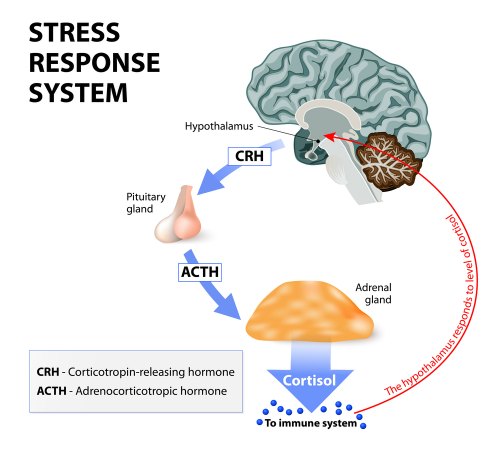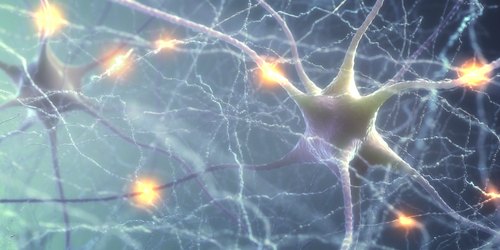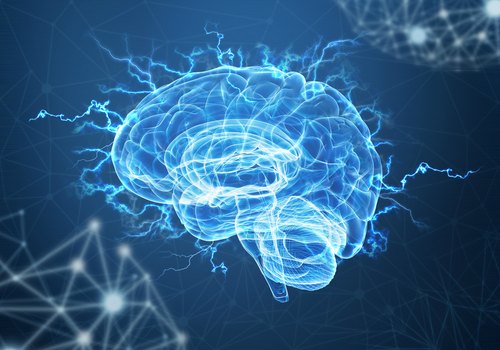“One thing is for sure: There is no brain condition that generates some disease called ADHD, and none has ever been demonstrated. And no child should be given amphetamines.”
-Dr. Robert Berezin, Psychiatrist and Author
Introduction
Do you know how many people take psychotropic drugs in the US??
IMS Health an independent service provider for healthcare have the figures for the year 2013:
| Age | Number |
| 0-1 YEARS | 274804 |
| 2-3 YEARS | 370778 |
| 4-5 YEARS | 500948 |
| 6-12 YEARS | 4,130340 |
| 13-17 YEARS | 3,617593 |
| 18-24 YEARS | 5,467615 |
| 25-44 YEARS | 21,029136 |
| 45-64 YEARS | 28,143196 |
| 65 + YEARS | 17,404930 |
| Grand Total | 78,694222 |
In 1990, 600,000 children and teens were prescribed stimulant drugs, and by 2013 this had risen to 3.5 million (483% increase). The psychiatric profession are just looking for a window of opportunity to prescribe their poison praying on the varied nature of children where some kids are active, quiet, dreamers, daring, dramatic, observers, impulsive, reserved, leader’s, followers, thinkers, and athletic. Searching every different normal trait in an attempt to find an abnormality like a noisy, difficult or disorganized child misconstrued as normal. Leon Eisenberg, an expert child psychiatrist admitted that ‘ADHD is a prime example of a fictitious disease. Dr Keith Conners who conducted the first trails on Ritalin (Methylphenidate) a central nervous stimulant on behalf of the pharmaceutical industry to treat ADHD, admits now that:
ADHD misdiagnosis is a “National Disaster of Dangerous Proportions”.
Case Study: Freya Milne
British Columbia, Canada

For the past six years, 16 year old Freya Milne had been having her own personal battle against anxiety and suicidal feelings while following an intensive school program for gifted children. For six years she had seen psychiatrists, counselors and therapists to assist with her psychiatric problems, and in January 2010 she accepted, for the first time psychiatric medicine Clonazepam (a benzodiazepine sedative)..do you remember in Part 2 of this series there was the following paragraph:
Clozapine – Take me to the rubber room
Are these people serious, who in their right mind (well I guess you’re halfway there with Schizophrenia) would even contemplate taking such a mind altering, body altering poison that converts you into a shivering, grimacing, tongue out, shaking wreck..try and get into a restaurant with your partner in that state..lol. This is unbelievable..I think I will stick to schizophrenia it attracts less attention. However, its OK, they have another drug, Clozapine which is slightly more socially acceptable (Ha Ha) . With this drug you only get dribbling at the urinal, difficulty breathing, feeling sad and discouraged, continual headache, slurred speech, sudden jerky movements of the body, convulsions, chest pain, pounding in the ears, sudden loss of consciousness, hyperventilation, irritability, sleep disorder, unsteadiness, trembling, problems with muscle control, anxiety, black tarry stools, loss of interest or pleasure, muscle spasms, lower back or side pain, restlessness, and much more…for your entertainment..lol. Well at least you don’t get Parkinson’s…come on folks this really is not serious..THIS CANNOT BE SERIOUS..TAKE ME TO THE RUBBER ROOM..and let me serve my days out there.

Clozapine is not a drug approved for adolescence, since this drug is known to cause suicidal thoughts as well as the slew of adverse effects outlined above, but the criminal psychologist chose to ignore all of this. Not long after Freya began taking the drug her mother contacted the psychiatrist reporting that Freya was behaving in an unusual manner, paralyzed with sadness and anxiety and a hypomanic (display of an elevated mood and/or irritable mood, pressure speech, inflated self esteem and a decreased need for sleep) episode…so what would you have done if you were a concerned psychiatrist ?…..I know what I would do, I would immediately make an appointment to interview Freya and began a course of psychosocial therapy and stop the drug…seems reasonable ??..I mean the drug is not helping, in fact it appeared to be making Freya worse..But of course I would approach this situation from a dietary perspective as well. Well what did the psychiatrist do ?, without seeing her he/her increased the dosage and twice filled the medication. On February just 3 weeks after beginning the new dose of medicine she took an overdose of Codeine, loaded her pockets with rocks and walked into the cold coastal waters off Victoria and ended her life. Lost for words ??..I know I am..my advice to her psychiatrist…GO DIRECTLY TO JAIL…DO NOT COLLECT 200..AND TAKE SOME OF YOUR COLLEAGUES WITH YOU.
Case Study: Melissa
(Taken from Robert Whitaker’s brilliant book ‘Anatomy of an epidemic’)

Melissa was an unhappy child in general growing up, feeling awkward and somehow different from other kids her age, and when her parents divorced when she eight years old, she and her brothers went live to live with Mum. By all accounts her mother struggled with depression as well. When Melissa began at middle school she started to feel normal and making friends, until Puberty hit at fourteen when she became overweight, and had acne. The kids at school called her ugly and a freak (which unfortunately is unkind but normal). She sat at her desk looking like the girl that climbs out of the TV set in the movie ‘The Ring’. Melissa said that every morning she awoke she just wanted to die.
Melissa as an Adult
Mr Whitaker interviewed Melissa when she was a grown attractive woman (..as Danny Kay would say…me..a swan..na…and then he looked and he saw and said..I AM A SWAN). Melissa when she was sixteen became so depressed from the unkind words and taunting she tried to commit suicide by swallowing handfuls of Benadryl and Valium, but survived, and then she fell into the clutches of a drug peddling psychiatrist who prescribed Zoloft. Melissa claimed that initially the drug uplifted her and in her words “I was like a new person” but after a while Zoloft’s ‘magic’ began to fade and the psychiatrist increased her dose, and when that didn’t work, he changed the medication to Paxil (Seroxat)…remember this drug from the previous article causing Donald Shell to kill his whole family only 2 days after he began taking this drug. Melissa said that the drug made her feel like a zombie. At least she didn’t kill anybody but her depression followed her through the years trying other drugs and the began questioning if depression is really a chemical thing…
Depression is a chemical thing
Well Melissa having the depression is a chemical thing, but nothing to do with drug deficiency, but more nutrient deficiency and a toxic lifestyle and diet…fix these ‘things’ and your depression will eventually fade and disappear and you can then live a normal life..and BURN THE DRUGS..you won’t need them anymore. Mr Whitaker interviewed Melissa 9 months later and she was still struggling with depression. This time, in the fall of 2008 she was prescribed s high dosage of a monoamine oxidase inhibitor (remember these ‘babies’ from the previous article).
These drugs which are available as:
- Isocarboxazid (Marplan)
- Phenelzine (Nardil)
- Selegiline (Emsam)
- Tranylcypromine (Parnate)

This is what the Mayo clinic say about these drugs:
‘Monoamine oxidase inhibitors (MAOIs) were the first type of antidepressant developed. They’re effective, but they’ve generally been replaced by antidepressants that are safer and cause fewer side effects. Use of MAOIs typically requires diet restrictions because they can cause dangerously high blood pressure when taken with certain foods or medications. In spite of side effects, these medications are still a good option for some people’.
The MAO Mechanism of Action
The monoamine family of enzymes are responsible for removing neurotransmitters norepinephrine, serotonin and dopamine from the brain as part of the allostatic equilibrium process of the body. However, since the psychiatric profession’s desperate attempt to treat depression without what they should be doing; good old fashioned therapy they peddle anti-depressants. If they don’t work then let’s inhibit the process that neutralises the neurotransmitter naturally as a means to keep the Serotonin to hang around longer, in the same way antidepressants try but fail in their quest.
Melissa still waiting for a Cure

So after a few weeks of relief for Melissa by taking these MAOI’s the depression returned with a vengeance, so then she was considering Electroshock therapy…I know why don’t we suggest a Lobotomy. She desperately wanted her life back and so wished she had had someone to talk to back when she was sixteen to help her with her eating problems, diet and exercise instead of trying Zoloft, Prozac, Effexor and the MAOI’s. I hear your cries and I feel your suffering and it’s too bad that you have been ignored all these years. Maybe you have found some relief, or if not, you read this and contact me.
Allostatic Load Type IV

This last allostatic load type describes ‘Inadequate response’ which deals with drug suppression of vital stress response pathways such as HPA and the pleasure/reward/cognitive/motor system. According to some websites they claim that antidepressants actually regulate the HPA axis. According to Mason & Pariante in Dec 2006 hyperactivity in the HPA especially in the elderly who have severe depression and taking Dexamethasone (an Anti-inflammatory drug) interfere with 2 glucocorticoid receptors in the brain Mineralocorticoid (MR) and Glucocorticoid (GR). MR regulates normal HPA fluctuation and CR regulates during stress. Long term antidepressant treatment has been found to upregulate these receptors, while short term down regulates these receptors. However, 2 years prior to this study Nicholas Barden’s study ‘Implication of the HPA axis in the physiopathology of depression’ refutes this when he states:
‘Lack of cortisol suppression by dexamethasone in depressed patients could indicate a primary hyperactivity of the adrenal glands rather than a central defect, but recent studies using CRH have eliminated this possibility’
Barden goes on to say that anti-depressants Monoamine oxidase inhibitors and reuptake inhibitors block the reuptake transporters of norepinephrine and serotonin and then says:
‘Although it was known that antidepressants produce changes in monoaminergic neurotransmitter systems, these changes could not be correlated with therapeutic efficiencies or measures of hypothalamic–pituitary–adrenal function, suggesting that as-yet-unknown mechanisms of action may be operative.’
Which in so many words is saying that we know, but these drugs block something and we do see some positive changes but we don’t know how. In all of the case studies, the sufferers all complain that antidepressants, and neuroleptics both provide temporary relief but the condition returns after a short time suggesting that the body is adapting to either the blocking or stimulant action. In one study involving 11 patients, evaluating the effects of serotonin brain receptors 5HT2A and 5HT2C with antagonist antidepressant drugs (such as Trazodone (brand name Oleptro or Mirtazapine (brand name Remeron) for the treatment of Cushing’s syndrome (a condition caused by a prolonged exposure to Cortisol that commonly trigger depression and anxiety along with a myriad of other physiological symptoms).
Cushing’s syndrome can also result in high ACTH (Hormone secreted from the Pituitary gland to the adrenal gland as part of the functioning HPA axis) if the Pituitary is implicated as part of the condition. The study resulted in the lowering of ACTH and Cortisol within the first week as a result from the Serotonin antagonist drugs which is a good thing. However, by the end of 1 month ACTH levels had increased (in some cases higher than before the drug was taken) suggesting once again due to bodily adaptation changes, trying to oppose the drug effects, attempting to normalize body function. This also suggests potential suppression of the HPA axis artificially decreasing ACTH and Cortisol within the HPA axis.
Then there is the aspect of Neurogenesis or the birth of new neuron process, which is continual throughout adulthood in 2 regions of the brain, the Subgranular Zone part of the Dentate Gyrus within the Hippocampus (about 700 new neurons are added daily), and the Striatum.

Neurogenesis occurs to support learning and memory fundamentally, but also occurs due to emotion, stress, and depression. Keep in mind that anti-psychotic drugs can cause memory loss. Normally, serotonin increase causes suppression of CRH (the hormone that is secreted by the hypothalamus to kick off the cascaded events of a stress response within the HPA axis) through a connection (Paraventricular nucleus) to the hippocampus. The serotonin not only suppresses the CRH hormone but it downregulates norepinephrine function within the Locus Coeruleus of the Pons located in the brainstem. Since this defines a non stress situation, neurogenesis is allowed to function normally within the Hippocampus since the Serotonin 5-HT1a receptors in the dentate gyrus operate without interference.
This is where things become a little disjointed, since conventional thinking believe that because normally it takes ‘birthed’ neurons 3-6 weeks to mature and it takes the same amount of time for SSRI drugs to take effect then this simply proves the hypothesis that the antidepressant SSRI drugs acting through neurogenesis improves depression. Research goes on to hypothesize that learning and memory is linked to depression, and in animal studies under chronic stress conditions the elevation of new born neurons by antidepressants improves the hippocampal dependent control of the stress response, again saying that anti-depressants regulate the stress pathway. Furthermore other studies have hypothesised that neurogenesis may promote neuroplasticity (long lasting neuronal changes), and that Prozac has been shown to restore plasticity in the rat brain
These various hypotheses are simply various ways to say the same thing that antidepressants are beneficial in more ways than one . It makes sense that under normal condition neurogenesis functions correctly but if the body becomes stressed a myriad of symptoms occur while the body adapts to this changed condition including potential neurogenesis and neuroplasticity dysfunction. However, as we have stated before, from case study after case study all patients report an improvement of symptoms closely followed by a resurgence of symptoms; so much for SSRI drugs acting through neurogenesis to improve depression..ok boys back to the drawing board!
Conclusions
We have now established all types of allostatic load, but there is still more to say in terms of epigenetic changes caused by psychotropic drugs and the potentially fatal reaction to medications that increase serotonergic tone of the central nervous system, as well as physiological pre-frontal lobe changes caused by psychotropic drug use.

“The point is, the brain talks to itself, and by talking to itself changes its perceptions. To make a new version of the not-entirely-false model, imagine the first interpreter as a foreign correspondent, reporting from the world. The world in this case means everything out- or inside our bodies, including serotonin levels in the brain. The second interpreter is a news analyst, who writes op-ed pieces. They read each other’s work. One needs data, the other needs an overview; they influence each other. They get dialogues going.
INTERPRETER ONE: Pain in the left foot, back of heel.
INTERPRETER TWO: I believe that’s because the shoe is too tight.
INTERPRETER ONE: Checked that. Took off the shoe. Foot still hurts.
INTERPRETER TWO: Did you look at it?
INTERPRETER ONE: Looking. It’s red.
INTERPRETER TWO: No blood?
INTERPRETER ONE: Nope.
INTERPRETER TWO: Forget about it.
INTERPRETER ONE: Okay.
Mental illness seems to be a communication problem between interpreters one and two.
An exemplary piece of confusion.
INTERPRETER ONE: There’s a tiger in the corner.
INTERPRETER TWO: No, that’s not a tiger- that’s a bureau.
INTERPRETER ONE: It’s a tiger, it’s a tiger!
INTERPRETER TWO: Don’t be ridiculous. Let’s go look at it.
Then all the dendrites and neurons and serotonin levels and interpreters collect themselves and trot over to the corner.
If you are not crazy, the second interpreter’s assertion, that this is a bureau, will be acceptable to the first interpreter. If you are crazy, the first interpreter’s viewpoint, the tiger theory, will prevail.
The trouble here is that the first interpreter actually sees a tiger. The messages sent between neurons are incorrect somehow. The chemicals triggered are the wrong chemicals, or the impulses are going to the wrong connections. Apparently, this happens often, but the second interpreter jumps in to straighten things out.”
-Susanna Kaysen, Girl, Interrupted 1999 Movie
References/Acknowledgments:
- Anatomy of an Epidemic Robert Whitaker Book 2015
- Rethinking Psychiatric drugs Grace Jackson Book 2005
- Total Number of people taking psychiatric drugs in the US CCHR Int Mental Health Watchdog
- Proactive search for Mental illness in Children Rob Wipond July 2014 Mad in America
- Adult Neurogenesis, Locus Coeruleus, Paraventricular nucleus, Gyrus Dentatus, Cushing’s syndrome, Mirtazapine, Trazodone, Wikipedia
- The effects of Antidepressants on the HPA axis Mason & Pariante Dec 2006 NCBI
- Implication of the HPA axis in the physiopathology of depression Nicholas Barden 2004 NCBI
- Girl Interrupted (1999 Movie )Quotes Goodreads
About The Author: Eric Malouin
In terms of my heritage I am not a thoroughbred, I am half English from England and half French Canadian from Quebec. Having spent the last 10 years in Medical research I thought that it was time to share my passion for true health to anybody interested in maintaining health without using conventional medicine. Once in the distant past I lived off conventional grocery shelves until you visit the man in the white coat and then a light shines through the darkness that you had not realized you were in… I was in..the twilight zone….I cured my own problems using natural methods, although they were not a big deal since I have always exercised..jogging every morning and tennis 12 hours/week, swimming but I was eating a lot of devil food that was causing my body to become unbalanced..an easy fix..reprogrammed my taste buds and gave the food back to the devil…lol
I hope you enjoy the articles……
Regards,
Eric
Contact the Author: emalouin@gmail.com